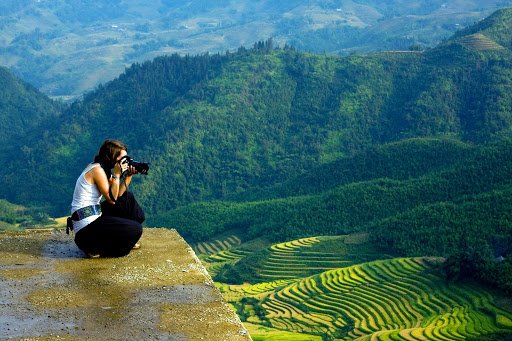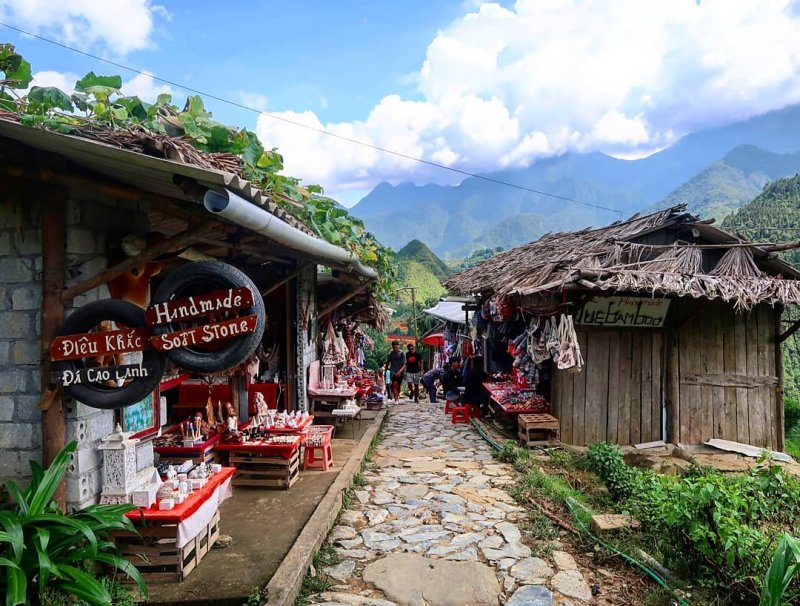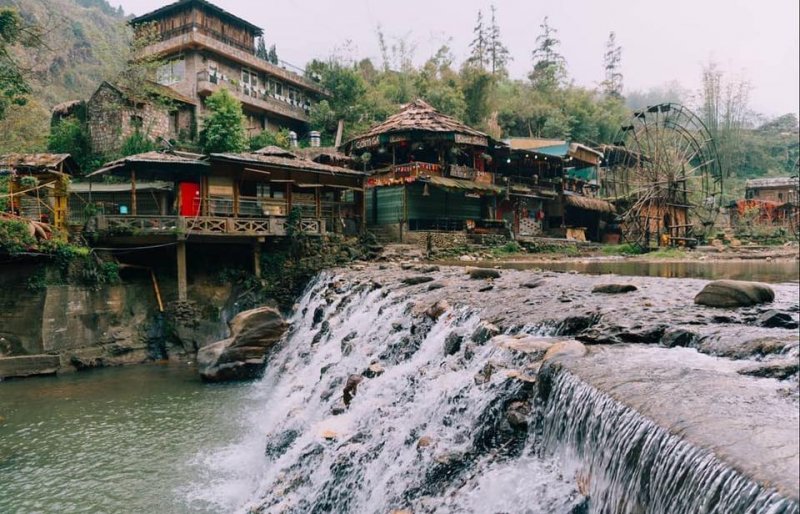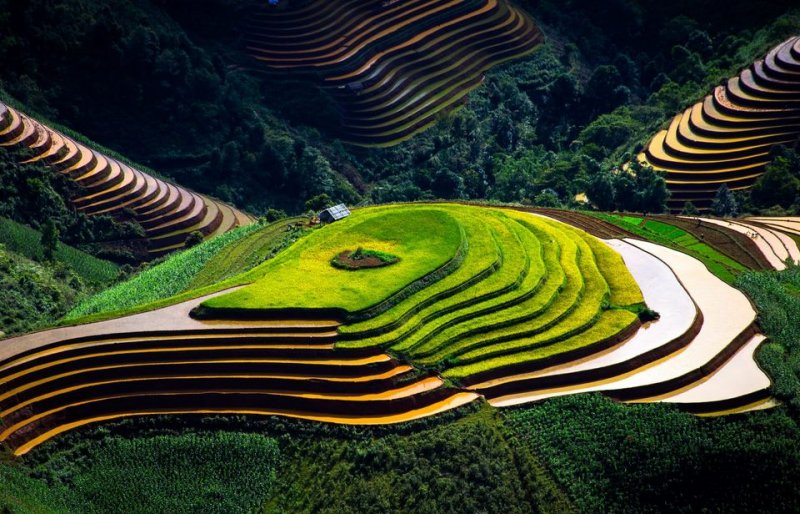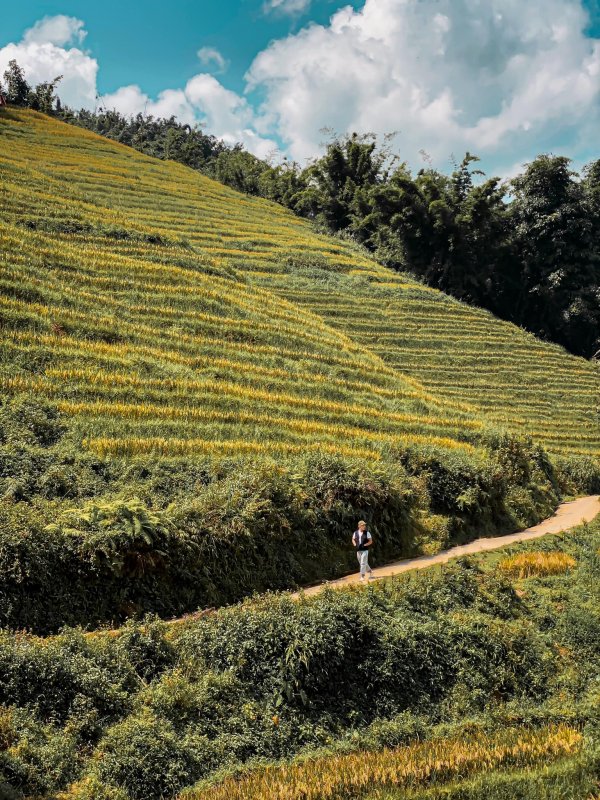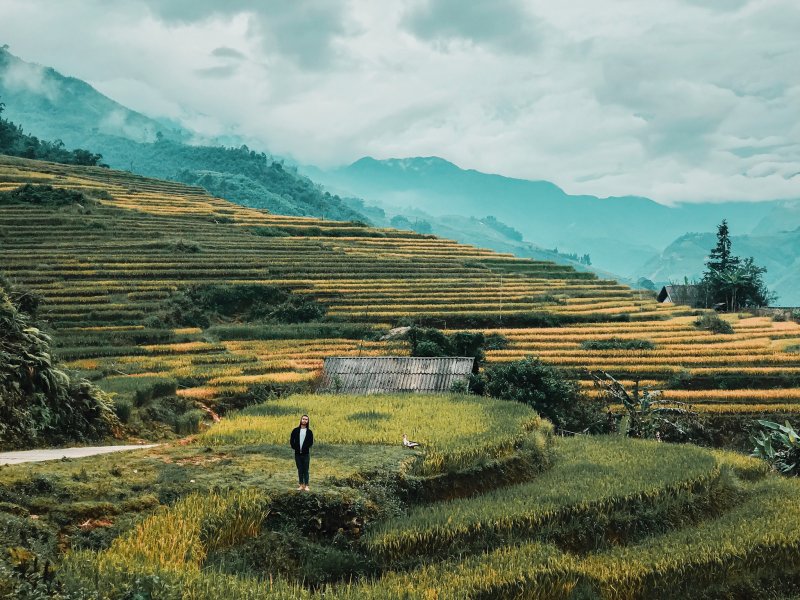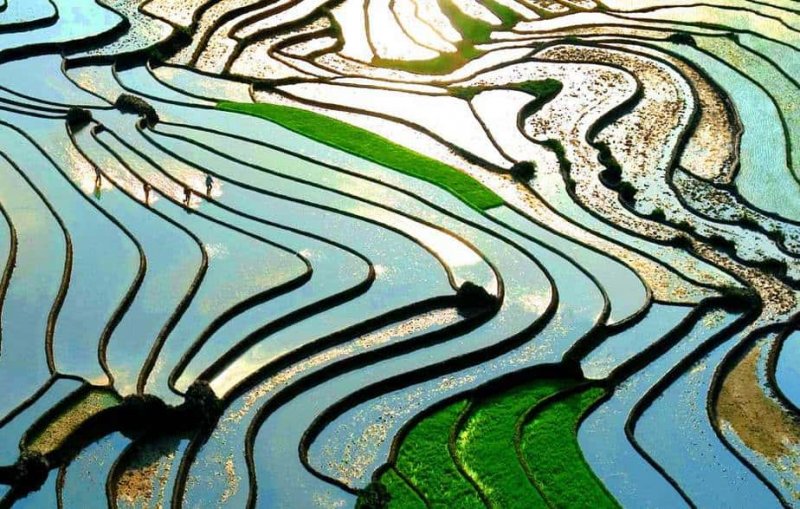Sapa is one of the deep mountains with the same cup that anyone wants to set foot in. Along with the beautiful and majestic scenery of the mountains and forests, the villages of ethnic minorities also have a great attraction for tourists.
In Sapa, besides the Kinh, five ethnic groups, including the Hmong, are the largest community, followed by the Red Dao, Giay, Tay, and Xa Pho.
Let's join Top Ten Reviews to discover five ethnic villages that must be visited when traveling to Sapa.
Cat Cat village - the closest Sapa village to the center
About Cat Cat Village Sapa
Cat Cat village is the most famous and most visited ethnic village for Vietnamese tourists. Cat Cat village is located in San Sa Ho commune, Sapa district, about 2km from the center of Sapa town to the village's gate. You can choose to walk, can combine mountain views, and admire the entire village from above. Cat Cat village in Sapa is also a tiny village of the Hmong ethnic community.
In addition to the beautiful landscape, Cat Cat village was built with additional infrastructure to serve tourism. Visitors can see small stone roads through the town center, exhibits of artifacts and products of people's labor, preserving the craft.
In the village center is a hydroelectric plant built by the French on the Muong Hoa stream. Now this place is a place for local performances to serve tourists daily.
On the way back, from the last stop of Cat Cat village to the town is more than 3km. After exploring the city with a long distance, the 3km road to return there will make you quite tired. If you are not in good health, you should ride a motorbike and park it at the village gate (not allowed to ride in the village).
Ticket price to visit Cat Cat Village Sapa
- Ticket price for motorbike parking is 10.000 VND (~0,44 USD).
- Tickets to Cat Cat village are 50.000 VND (~2,18 USD)/person.
- The price of renting ethnic clothes is 50.000 VND (~2,18 USD)/person.
In front of the village gate, there are many ethnic clothing rental shops. You can buy yourself a set. There are also many other accessories that you can rent, such as umbrellas for ethnic minorities.
Another small note is that when buying tickets, there are many maps at the ticket counter. You can get it for free, and that map is handy. It has all the famous attractions in Cat Cat village and directions on the way – very helpful.
It would help if you prepared some candy in a bag because many ethnic children will follow you to visit the village. Those kids sell crafts and invite you to buy goods. If you don't want to buy them, give them candy, and they won't follow you anymore.
Ta Phin Village - The place to keep the most ancient things in Sapa
About Ta Phin Village Sapa
About 14 km from Sapa town in the direction of Lao Cai city, Ta Phin village is home to the Red Dao ethnic group. Ta Phin village is located in a valley with four mountains, but it is pretty vast and flat.
This place is famous for its herbal baths, creating the brand "Dao Do herbal bath." When walking around Sapa town, you will see many massage shops with herbal bath services coming from here.
You should note that do not wear undyed white linen clothes when visiting the visit because this color is symbolized for the funeral. Besides, when the host invites you to drink water or wine if you refuse, you should have a tactful word to The host understands, sympathizes. Remember, do not put the bowl on the table. Only the priest is allowed to do so to drive away evil spirits.
Today, Ta Phin village is one of the thriving villages of homestay tourism. In addition to visiting ancient towns and caves, visitors can experience bathing in medicinal herbs, buy brocade products, or enjoy unique dishes served by restaurants here.
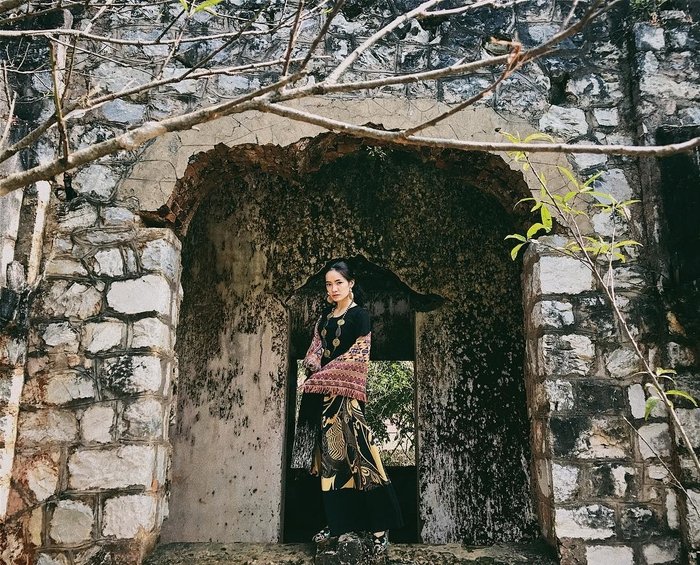
What does Ta Phin Sapa have?
Near Ta Phin village, there is Ta Phin cave. The cave's mouth is about 5m high, 3m wide, there is a path through the ground. In the cave, visitors will see a rock like a young woman holding a baby, stones like fairies, some places like giant raspberries. At the broadest home in the cave, stalactites hang down like undulating, undulating, jade-colored glitter. Going deep, we meet a large rock lying slightly on the side. The stone floor is imprinted with chicken feet. Right at the top of the suitable rock, there are also indentations like horseshoes. A cliff opposite, French inscriptions are engraved with complex objects. To this day, even though the dust of time has covered it, we can still read it. Ta Phin Cave has many mysteries to us that need to be protected and preserved.
On Highway 4D to Lao Cai city, about 4 km out of Sa Pa town, there is a fork turning into a small asphalt road, going a bit will meet a toll station. Each person has a ticket of 20.000 VND (~0,87 USD). Continue running for about 18 more kilometers to reach Ta Phin village.
In many sections, the car drives along the hillside. The two sides are green terraced fields. The winding areas hug the back of the hill, creating soft curves, gliding like ripples in the valley. Far away on the horizon, on the rocky slopes, are green patches of cornfields. The poetic scenery helps us forget the fear of this long "suffering road"!
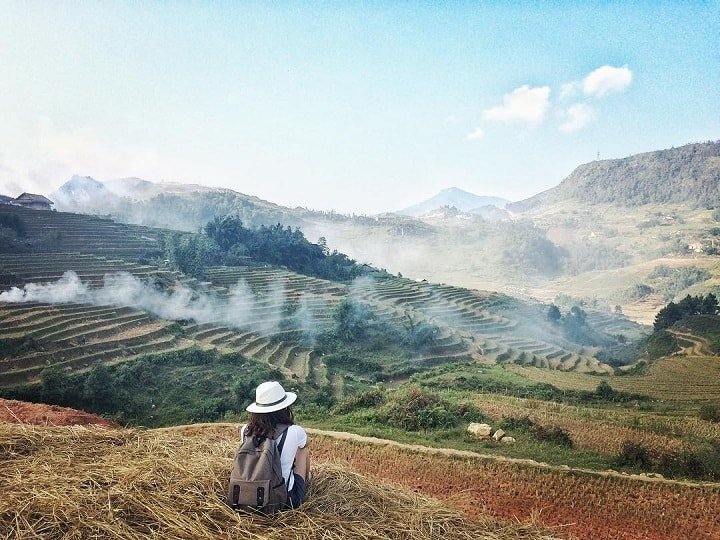
Lao Chai village - Sapa village has majestic mountain scenery
About Lao Chai Sapa
Lao Chai village is a village of the Black Hmong ethnic group, located 7-8 km southeast of Sapa town. Visitors can come to the Lao Chai table from Sapa without spending too much time traveling. Coming to Lao Chai village, visitors can interact and learn about the culture and customs of ethnic minorities in the North. Lao Chai is a village consisting of three large villages with more than 100 households of the Black Hmong ethnic group.
Lao Chai is the village with the most charming scenery in Sapa. It leans back against the majestic Hoang Lien Son range, in front of the Muong Hoa stream flowing through and the vast terraced fields.
From the high point of the main road 8 km long from Sapa town to the village, visitors can admire a panorama of Lao Chai village. Behind the city are high mountains and facing the river. The Hmong people in this village make their living by intensive rice farming in the lowlands near the foot of the valley. It is considered their primary source of income besides growing corn on the mountainside behind the village.
What does Lao Chai Sapa have?
Black Hmong communities still keep a lot of traditional customs, especially child marriage. Most Black Hmong households live off crops and land and rely solely on income from selling textiles and garments at local markets. Only when buying livestock or household items makes the Black Hmong need money because most of their food is grown and raised by themselves. Coming to Lao Chai village, visitors will experience the culture, customs, and life of the Black Hmong ethnic people. It is also an excellent chance to admire the typical images of terraced fields of the Northern mountainous region.
Ta Van village
About Ta Van Sapa
Along with Cat Cat village, Ta Van Sapa village is also a destination that is very popular with young people to explore. Ta Van is a small village in Ta Van commune, Sapa district, Lao Cai province. This place is only about 10km from the center of Sapa tourist town. Without the high-rise buildings, without the city's smog, Ta Van has a simple romantic scene with the high blue sky, terraced fields of vast ripe rice, the rustic cottages, and small dirt roads strewn with wildflowers on both sides. All create a strange and peaceful upland picture.
Overcome Lao Chai village 3 km will come to Ta Van village, where the Giay ethnic community lives. Located in a valley with the Muong Hoa stream flowing through, the terraced fields here are gorgeous. Lao Chai combined into a common name for a tourist destination, "Lao Chai - Ta Van," visiting Lao Chai must-visit Ta Van and vice versa.
What does Ta Van Sapa have?
Ta Van is the most muscular homestay development and has the most homestays for rent in Sapa. Visiting Ta Van, tourists can also stop here for lunch at local restaurants.
You can go to Ta Van Sapa village by car or motorbike. However, many self-sufficient Sapa tourists prioritize motorbikes because you will walk while watching the romantic scenery and inhaling the fresh air here. Besides, Ta Van is mainly tiny roads, so large passenger cars will also be challenging to move. Rent a motorbike in the town center and ask them directly for directions to Ta Van.
It's hard to say what the Ta Van Sapa tour will bring you. What I can be sure of is just a trip to find peace. As I said, Ta Van does not have high-rise hotels, restaurants, modern homestays, and magical check-in points. Ta Van has a much more idyllic and wild beauty. The houses here are usually made of wood or houses. Household items are also made of wood. Without much influence from modern life, the people here make the most of everything that nature offers.
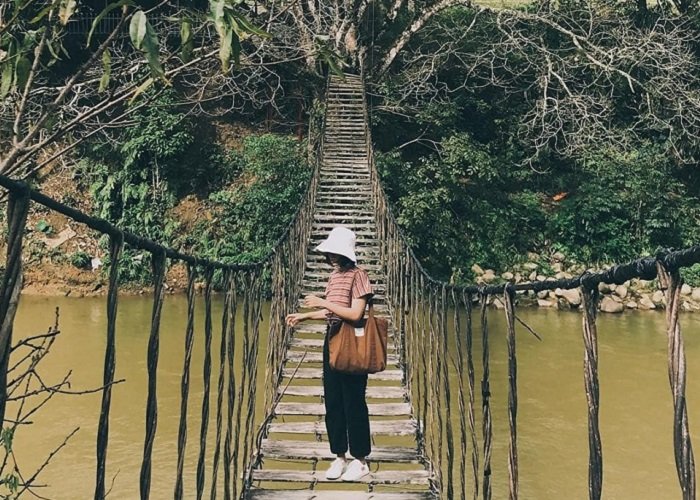
Sin Chai village
About Sin Chai Sapa
One of the most extraordinary things about traveling to Sapa is wild beauty, tinged with the time of the ancient villages. Most of the towns in Sapa keep their rustic and simple features intact, but the most romantic and rural village is Sin Chai. Going through Cat Cat village about 2 km, you will reach Sin Chai village. However, it is located quite close to Sapa town. It is not as touristy as other villages. It is an ideal place for tourists who want to observe and learn about the life of the indigenous Black Hmong people.
Sin Chai village (or Xin Chai) is "embraced in the heart" by the Hoang Lien Son range, located at the foot of the mountain, creating a "very poetic" scene in the middle of the wild mountains. As one of the villages with the largest area in Sapa, Sin Chai village is increasingly attracting many domestic and foreign tourists.
What does Sin Chai Sapa have?
People often visit Sin Chai village when the rice is ripe, from September to October every year. At this time, vast space is full of the color of ripe rice, captivating people's hearts. Who visits Sin Chai village once but does not bring back a lot of inconsolable memories.
The Hmong's typical wooden-walled houses are located right next to the minor road that runs from the beginning to the end of the village. The road is wide enough for only one motorbike to pass. Although the terraced fields around the town are not magnificent, they have unique rice season features. When is the best season to travel to Sapa?
When is the best time to go to Sin Chai village? It is tough to have an exact and complete answer because each person will have a different feeling about Sapa. However, there are still a few golden times that many people spread the word the most: May, June, September, and October.
